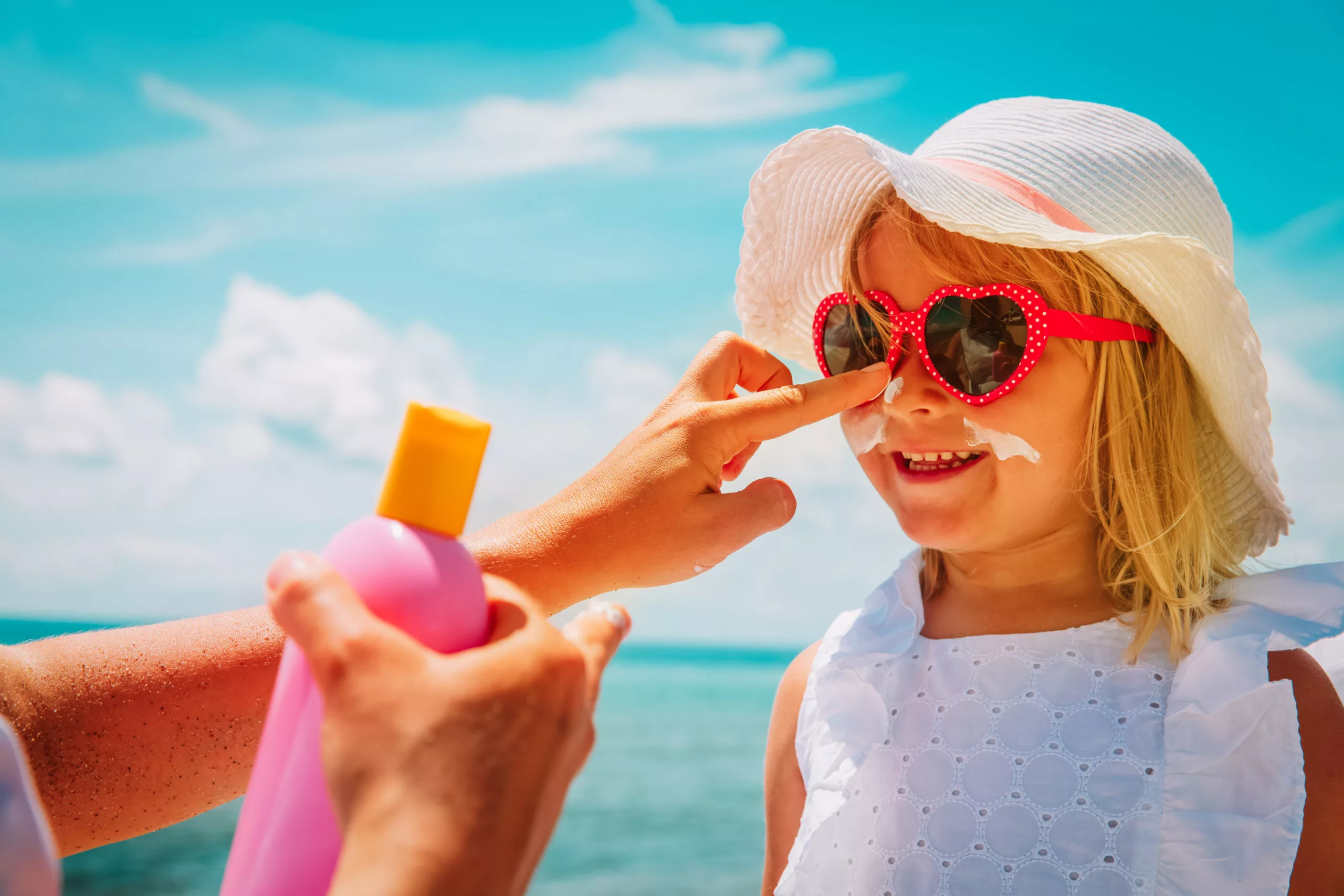Whether you are relaxing by the pool or spending a day at the beach, swimming is among the best methods to stay active, cool off, and enjoy fun in the sun. Nonetheless, being outdoors, particularly in direct sunlight, exposes your skin to harmful ultraviolet (UV) radiation that can cause significant long-term damage. This is why sunscreen must always be included in your swimming essentials.
In this article, we will examine why sunscreen is vital when swimming, the dangers of UV exposure, and how to select the appropriate sunscreen for your needs.
1. Understanding UV Radiation: The Hidden Danger
The sun produces two forms of ultraviolet (UV) radiation that can harm your skin:
UVA (Ultraviolet A): These rays penetrate further into the skin and are chiefly accountable for premature aging (wrinkles, fine lines) and skin damage. They are also associated with the development of skin cancer.
UVB (Ultraviolet B): These rays are the primary cause of sunburns and also contribute to the development of skin cancer. UVB rays are more potent than UVA rays but are less consistent throughout the day and year, peaking during midday and in the summer months.
Although you may not feel the immediate consequences of UV exposure, these rays are continuously affecting you, and prolonged or repeated exposure can result in considerable damage over time. Swimming outdoors in direct sunlight exposes you to these rays for lengthy periods, making sunscreen an essential requirement.
2. Water Reflects UV Rays, Increasing Exposure
One of the key reasons why sunscreen is essential when swimming is that water reflects UV radiation. While you may believe the water will shield you from the sun’s harmful effects, the reality is that up to 80% of UV rays can penetrate the surface of water, leaving you exposed to radiation both directly from the sun and indirectly from the water’s reflection.
If you are swimming in the ocean or a pool with a bright, reflective surface, you might be exposed to more UV rays than you think. Even when underwater, you’re not protected from the damaging impacts of UV radiation. Additionally, UV rays are at their most intense between 10 a. m. and 4 p. m. , which is when most individuals choose to swim.
3. Sunscreen Prevents Sunburn and Long-Term Skin Damage
Sunburns are not only uncomfortable; they are also a signal of skin damage due to excessive UV exposure. Each time you get sunburned, you harm your skin cells, and over time, this accumulated damage can elevate your risk of premature aging, skin cancer, and other skin issues.
When you swim without sunscreen, you become more susceptible to sunburn. Even if you do not notice the effects right away, UV radiation is still harming your skin. Sunscreen offers a protective layer that assists in absorbing or reflecting these harmful rays, diminishing your chances of getting burned.
Moreover, multiple instances of sunburns (particularly in childhood) heighten your chances of developing skin cancer, including melanoma, which is the most lethal type of skin cancer. As per the American Academy of Dermatology, experiencing just five sunburns throughout your life can double your likelihood of developing skin cancer.
4. Sunscreen Aids in Keeping Skin Healthy for an Extended Period
In addition to preventing burns, sunscreen aids in preserving healthy, youthful skin. UV exposure speeds up the skin’s aging process by degrading collagen and elastin, two essential proteins that help keep your skin smooth and elastic. This results in sagging, fine lines, and wrinkles.
When swimming without sunscreen, you raise the risk of photoaging, which refers to the premature aging of the skin caused by UV exposure. Using a broad-spectrum sunscreen with an SPF of at least 30 helps prevent the detrimental effects of UVA and UVB rays, allowing your skin to remain looking fresh and healthy for many years ahead.
5. Water-Resistant Sunscreen: Essential for Protection While Swimming
A prevalent misconception is that sunscreen gets washed off in water, rendering it ineffective while swimming. While it is accurate that regular sunscreen may lose its effectiveness after swimming or perspiring, water-resistant sunscreens are formulated to endure the effects of water for a specific duration, typically around 40 to 80 minutes.
When selecting sunscreen for swimming, look for labels that denote “water-resistant” and opt for one that provides broad-spectrum protection (against both UVA and UVB rays). Reapply sunscreen every two hours, or more often if you have spent a long time in the water, to ensure ongoing protection.
6. Safeguarding Sensitive Skin and Children
Sunscreen is not solely for adults. Children’s skin is especially susceptible to UV radiation, and sunburns can have more grave consequences for them. Research has indicated that children who experience multiple sunburns face a greater risk of developing skin cancer later in life.
Selecting a mild, mineral-based sunscreen for children is an excellent choice. Mineral sunscreens, which include ingredients such as zinc oxide or titanium dioxide, rest on the surface of the skin and physically block UV rays, making them less likely to irritate sensitive skin.
7. The Significance of Comprehensive Sun Protection
While sunscreen is an essential component of sun protection, it is not the only step you should take when swimming. Combine sunscreen with other protective methods to minimize your exposure to harmful UV rays:
Seek shade: Whenever possible, swim in shaded regions or take breaks under umbrellas or beach tents to reduce direct sun exposure.
Wear protective clothing: Consider donning a rash guard or swim shirt made from UV-blocking fabric for additional protection.
Wear sunglasses: Shield your eyes from harmful UV rays by wearing sunglasses that block 100% of UVA and UVB radiation.
Use a wide-brimmed hat: A hat can shield your face, neck, and ears, which are often exposed while swimming.

Tinggalkan Balasan